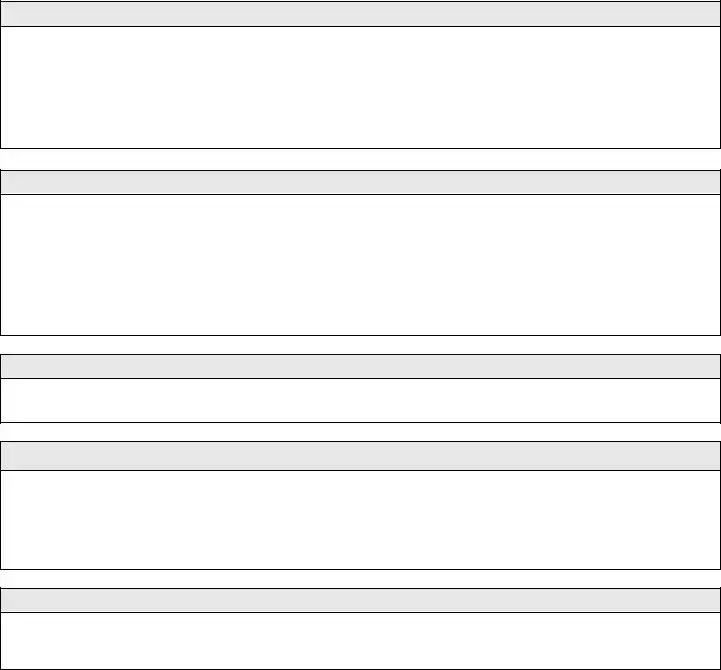A 4-Point Inspection Form is a document used to assess the condition of four key systems in a property: the roof, electrical system, HVAC (heating, ventilation, and air conditioning), and plumbing. This inspection is typically required by insurance companies when evaluating a property for coverage. The form must be completed by a Florida-licensed inspector and includes details about the condition of each system, along with photos and any noted hazards or deficiencies.
The form must be completed, signed, and dated by a verifiable Florida-licensed professional. Acceptable inspectors include general contractors, residential contractors, building code inspectors, and home inspectors. Each inspector can only sign off on the sections relevant to their trade. For example, an electrician can only complete the electrical section.
What systems are evaluated in a 4-Point Inspection?
The 4-Point Inspection evaluates the following systems:
-
Roof
-
Electrical System
-
HVAC System
-
Plumbing System
Each system is assessed for its condition, any visible hazards, and whether it is functioning properly.
What are the minimum photo requirements for the inspection?
The inspection requires specific photos to be included with the form. The minimum photo requirements are:
-
Each side of the dwelling
-
Each slope of the roof
-
Water heater, under cabinet plumbing/drains, and exposed valves
-
Main electrical panel with the interior door open
-
Electrical box with the panel off
-
All noted hazards or deficiencies
These photos help provide a visual record of the property's condition.
What happens if a system is found to be unsatisfactory?
If any system is deemed unsatisfactory, the inspector must provide details and comments about the issues found. This could include information about leaks, corrosion, or any other deficiencies. Insurance agents are responsible for reviewing these details before submitting the application for coverage.
No, the information provided in the 4-Point Inspection Form is not a warranty or assurance of the suitability, fitness, or longevity of any of the systems inspected. It is used solely to determine insurability based on the current condition of the systems.
The additional comments section should include detailed descriptions of any updates made to the systems, visible hazards or deficiencies, and any systems that are not in good working order. This section helps provide context and clarity regarding the condition of the property.
Once the 4-Point Inspection Form is completed and signed by the licensed inspector, it must be submitted along with the insurance application. The writing agent must review the form to ensure all requirements are met. Applications for properties with systems not in good working order or with existing hazards cannot be submitted.
While the specific 4-Point Inspection Form is not mandatory, any alternative inspection report submitted must include at least the same level of detail as the 4-Point Inspection. This ensures that the insurance company has the necessary information to evaluate the property effectively.
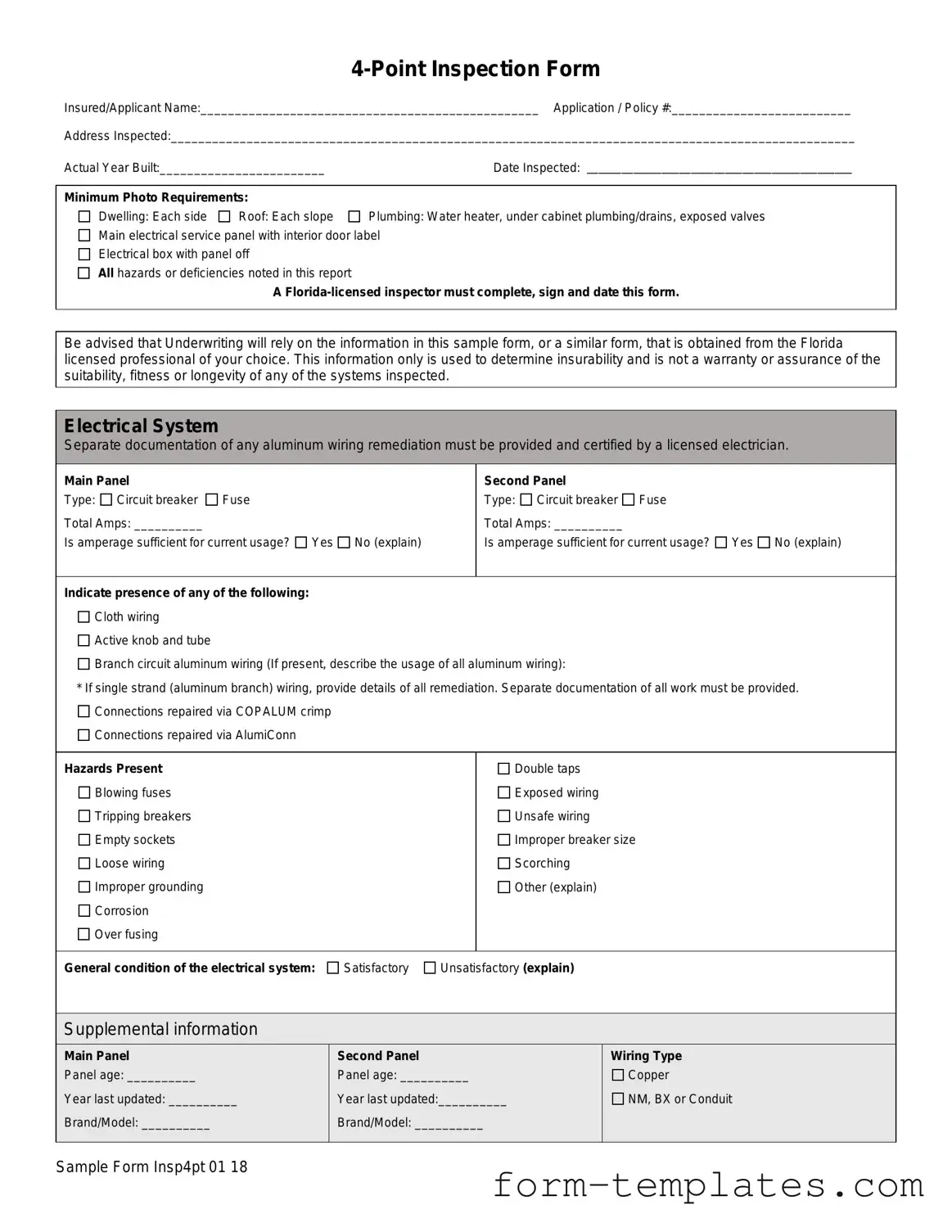
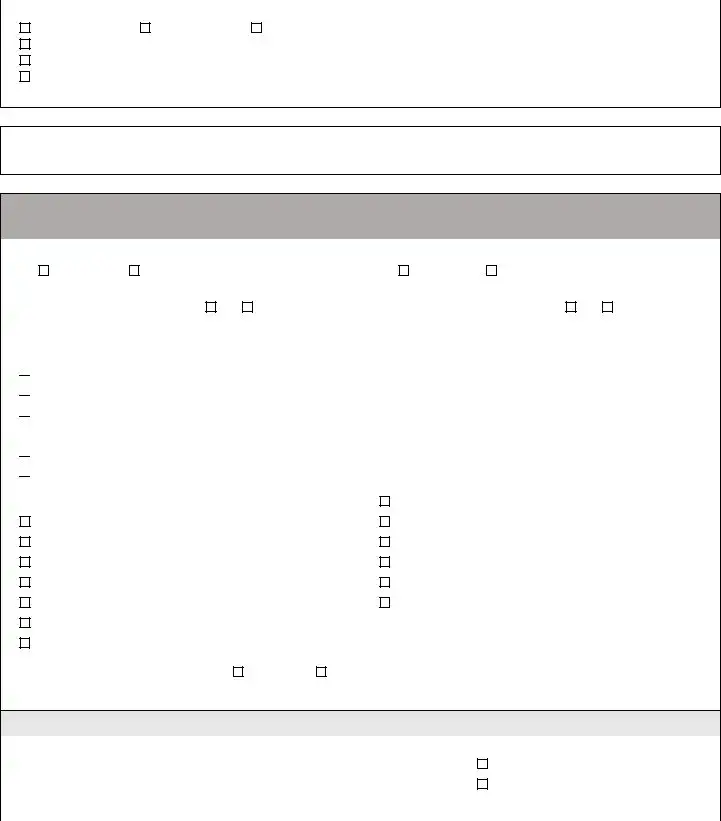

 Cloth wiring
Cloth wiring
 Active knob and tube
Active knob and tube
 Branch circuit aluminum wiring (If present, describe the usage of all aluminum wiring):
Branch circuit aluminum wiring (If present, describe the usage of all aluminum wiring):
 Connections repaired via COPALUM crimp
Connections repaired via COPALUM crimp 
 Connections repaired via AlumiConn
Connections repaired via AlumiConn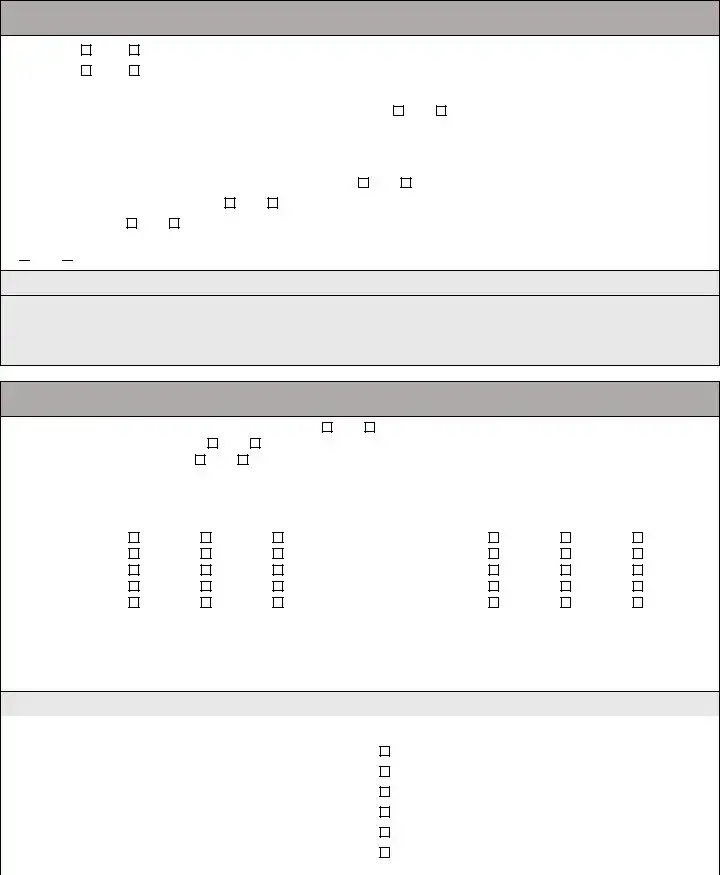

 Yes
Yes 
 No
No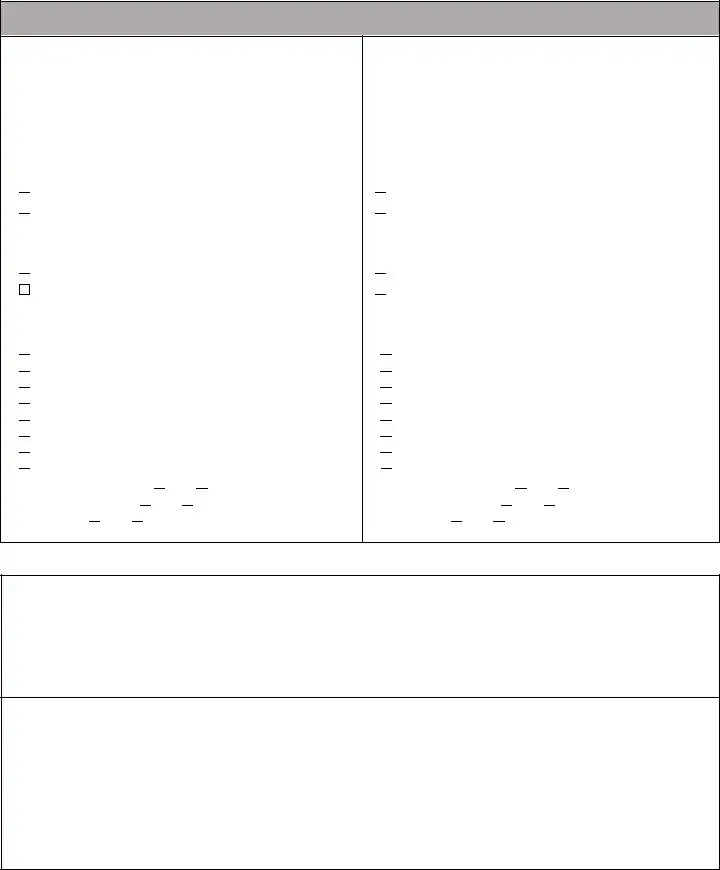

 Full replacement
Full replacement 
 Partial replacement
Partial replacement
 Satisfactory
Satisfactory
 Cracking
Cracking
 Cupping/curling
Cupping/curling
 Excessive granule loss
Excessive granule loss
 Exposed asphalt
Exposed asphalt
 Exposed felt
Exposed felt
 Missing/loose/cracked tabs or tiles
Missing/loose/cracked tabs or tiles
 Soft spots in decking
Soft spots in decking 
 Visible hail damage
Visible hail damage


 Yes
Yes  No
No
 Yes
Yes 
 No
No
 Full replacement
Full replacement 
 Partial replacement
Partial replacement Satisfactory
Satisfactory Unsatisfactory
Unsatisfactory 
 Cracking
Cracking
 Cupping/curling
Cupping/curling
 Excessive granule loss
Excessive granule loss
 Exposed asphalt
Exposed asphalt
 Exposed felt
Exposed felt
 Missing/loose/cracked tabs or tiles
Missing/loose/cracked tabs or tiles
 Soft spots in decking
Soft spots in decking 
 Visible hail damage
Visible hail damage


 Yes
Yes  No
No
 Yes
Yes 
 No
No